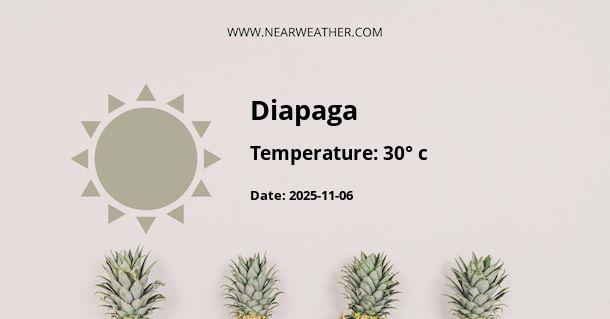Climate and Weather in Diapaga, Burkina Faso
Located in eastern Burkina Faso, the town of Diapaga experiences a semi-arid climate with distinct wet and dry seasons. Understanding the climate and weather patterns of Diapaga is essential for both residents and visitors to plan their activities and make informed decisions. In this article, we will explore the climate and weather conditions in Diapaga throughout the year.
Temperature
The temperature in Diapaga varies significantly between seasons. The town experiences hot and dry conditions for most of the year, with the hottest months being March, April, and May. During this period, temperatures often exceed 40 degrees Celsius (104 degrees Fahrenheit). The coldest months are December and January, when temperatures can drop to around 15 degrees Celsius (59 degrees Fahrenheit) at night.
The table below provides a summary of the average monthly temperatures in Diapaga:
| Month | Average Temperature (°C) |
|---|---|
| January | 19 |
| February | 23 |
| March | 27 |
| April | 30 |
| May | 32 |
| June | 31 |
| July | 29 |
| August | 29 |
| September | 29 |
| October | 29 |
| November | 25 |
| December | 20 |
Rainfall
Diapaga experiences a distinct wet season and dry season. The wet season typically lasts from May to October, with the heaviest rainfall occurring in July and August. During this period, the town receives an average rainfall of around 600-800 millimeters (23-31 inches).
The dry season, on the other hand, extends from November to April, with little to no rainfall. The driest months are December and January, where the average rainfall drops to less than 1 millimeter. The table below provides a summary of the average monthly rainfall in Diapaga:
| Month | Average Rainfall (mm) |
|---|---|
| January | 0.4 |
| February | 0.6 |
| March | 3.8 |
| April | 17.2 |
| May | 60.3 |
| June | 105.9 |
| July | 192.2 |
| August | 211.2 |
| September | 144.4 |
| October | 35.9 |
| November | 3.8 |
| December | 0.6 |
Wind
Diapaga experiences moderate wind speeds throughout the year. The prevailing wind direction is predominantly from the northeast, with speeds ranging between 5 to 15 kilometers per hour (3 to 9 miles per hour).
Dust and Sandstorms
Due to its proximity to the Sahara Desert, Diapaga is occasionally affected by dust and sandstorms, especially during the dry season. These storms can cause reduced visibility and temporarily disrupt daily activities. It is advisable to take necessary precautions and stay indoors during such events.
Climate Change and Impacts
Like many regions around the world, Diapaga is also experiencing the impacts of climate change. Increasing temperatures, erratic rainfall patterns, and prolonged dry spells have a significant impact on the local environment and livelihoods.
These changes in weather patterns can lead to challenges in agriculture, water availability, and increased risks of drought. Adapting to these changes and implementing sustainable measures is crucial to mitigate the impacts of climate change.
Conclusion
Diapaga's climate is characterized by hot and dry conditions for most of the year, with distinct wet and dry seasons. Understanding the temperature, rainfall, wind patterns, and the potential impact of climate change is essential for residents and visitors to plan their activities and make informed decisions. By considering these factors, individuals can better prepare for the weather conditions in Diapaga.
A - Diapaga's Latitude is 12.070830 & Longitude is 1.788890.
A - Weather in Diapaga is 33° today.
A - Climate Conditions in Diapaga shows overcast clouds today.
A - Humidity in Diapaga is 11% today.
A - Wind speed in Diapaga is 6.62 km/h, flowing at 22° wind direction. today.
